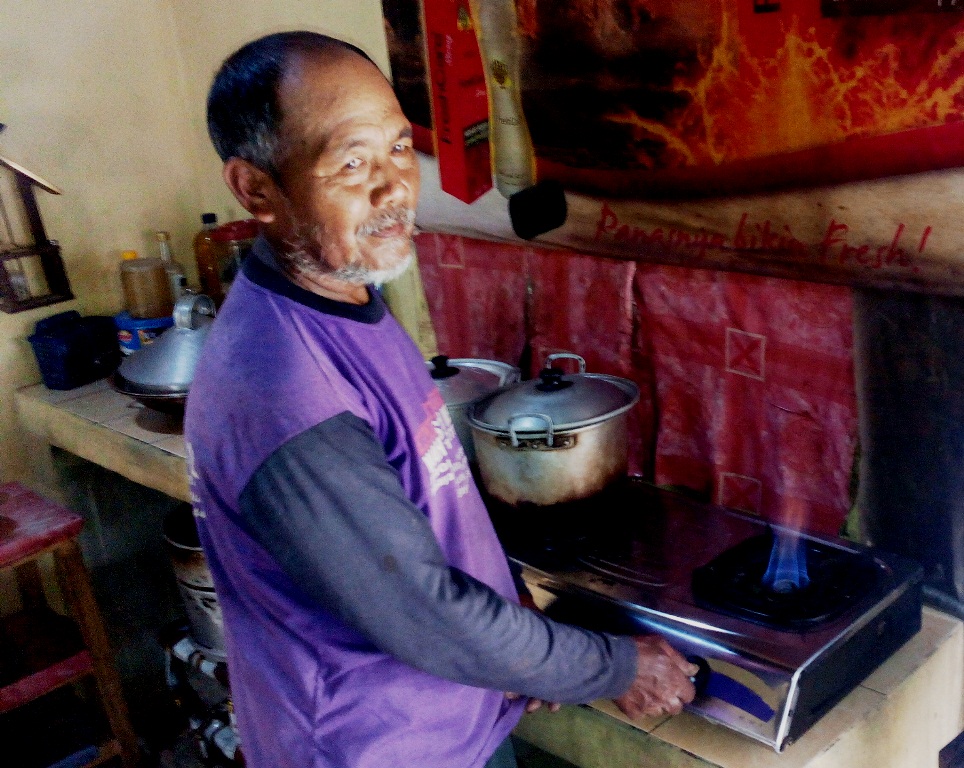
Cattle farmers in Lalung utilise biogas to replace the LPG.
KR JOGJA, KARANGANYAR – The utilisation of cow manures have been proven to free the cattle farmers from LPG addiction. Andini Lestari Lulung Cattle Farmers Group distributes biogas to the residential homes free of charge and in convenient manner.
“We have been utilising biogas produced by the cow manures for the last two years. We rely on the biogas for our cooking purposes while buying a 3-kg capacity LPG is for energy supply assurance only,” uttered Widayat, a biogas user and at the same time member of Andini Lestari Lulung Cattle Farmers Group, Lalung Village, Karanganyar to Krjogja.com, Friday (01/23/2015).
Biogas produced in the cow manure container tank is distributed through a 100-meter PVC pipe to his kitchen. The measurement of gas consumption depends on the amount of manures processed in the tank.
Two tanks planted below the surface in the shed area supply the gas for cooking purposes of three families living nearest to the shed. Widayat explained further, the heat produced by biogas is not different from the LPG often utilised the users of the subsidised good.
It is only that the odour of the biogas produced through the processing of cow manures are more offensive. Eventhough the utilisation of the biogas are free of charge, the users remain responsible to process the waste of the cow sheds until they are ready to be used as the raw materials for biogas conversion.
“Early in the morning, tlethong (cow manure) is crushed to soft. Only then they are poured into the container. Late in the evening, the biogas will be ready to be used for cooking,” he said.
The responsibilities to prepare the raw materials of the biogas are shared among the renewable energy in turn. The responsibilities include distributing the biogas to the stoves.
“When everyone distribute the biogas all at the same time to their stoves, the flames will then become smaller. Therefore, we have to take turns. Other families may also utilise the biogas provided that they are willing to process the raw materials,” he explained.
The head of Andini Lestari Lulung Cattle Farmers Group, Joko Kiswanto, said, distributing the biogas to the residential homes are forms of contribution to the people living nearest to the cow sheds. Initially, biogas distribution is prepared for nine households.
“Back in 2009, the national government provided assistance in the form of 52 cows. Now the cow population has exceeded 100. Local community also enjoy the benefit in the form of biogas utilisation,” he explained.
Joko added, limited tank capacity has made it difficult to increase biogas supply to the house. In addition, it requires a standard equipment to distribute the gas rather than just an ordinary PVC pipe which is prone to gas leakage.


